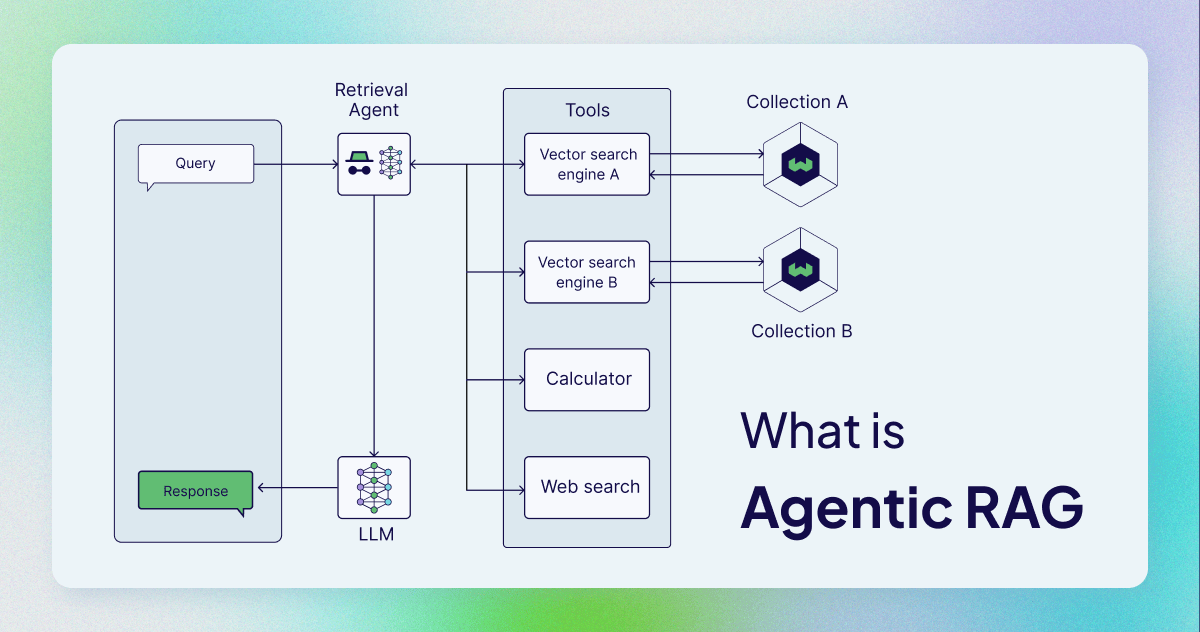The Rise of Open Source Generative AI - Open Source For You
Let’s delve into the cutting-edge technologies of open source generative AI, exploring their emergence, real-world applications, and how they are transforming industries.
The generative AI revolution has accelerated over the last few years, with advancements reshaping multiple industries by automating complex tasks and enhancing human capabilities. While proprietary AI models have long been the staple of tech giants, the rise of open source solutions has democratised the AI space, making powerful models like language models (LLMs), vision language models (VLMs), language action models (LAMs), speech-driven models (SLMs), and retrieval-augmented generation (RAG) agents accessible to all. Open source generative AI is breaking down barriers, offering unprecedented levels of transparency, customisation, and collaboration.
The Power of Large Language Models (LLMs)
At the heart of generative AI lies the power of large language models (LLMs). These models, such as GPT (Generative Pretrained Transformer), are designed to understand and generate human language. LLMs are trained on a large corpora of text data, enabling them to answer questions, write essays, summarise documents, and even engage in sophisticated conversations. The open source movement has led to a proliferation of LLMs, enabling businesses, researchers, and developers to use, fine-tune, and scale these models to meet specific needs.
The key benefits of open source LLMs include:
- Open source models like GPT-2, GPT-Neo, and GPT-J allow businesses to leverage advanced NLP capabilities without incurring hefty licensing fees.
- Open source models can be adapted and fine-tuned to specific domains, making them suitable for specialised use cases such as legal document generation, medical research, and customer service.
Visual Language Models (VLMs)
Visual language models (VLMs) combine natural language processing (NLP) with computer vision. These models are capable of understanding and generating both text and images, making them perfect for applications like caption generation, visual question answering (VQA), and image synthesis from textual descriptions. The open source community has made significant strides in developing models such as CLIP (Contrastive Language–Image Pretraining) and DALL-E that bridge the gap between vision and language.
Advantages of open source VLMs include:
- Open source VLMs provide a framework for developing systems that can reason across both images and text, opening new doors for creative and analytical AI solutions.
- Content creators are increasingly using these models for generating and modifying images based on textual input, which has profound implications for industries like marketing, e-commerce, and entertainment.
Language Action Models (LAMs)
Language action models (LAMs) are designed to understand not just language, but also the actions associated with it. These models can interpret natural language instructions and translate them into physical actions, making them ideal for applications in robotics, automation, and intelligent assistants. Open source LAMs, like the ones built on platforms such as OpenAI’s Codex, allow for the creation of AI systems that can automate tasks across multiple domains by translating verbal commands into real-world actions.
The open source model’s key benefits include:
- With LAMs, robots or intelligent systems can learn from human instructions and execute complex tasks, ranging from industrial applications to home automation.
- Open source LAMs power AI assistants capable of performing tasks such as scheduling meetings, controlling IoT devices, and even assisting in surgery.

Speech-Driven Models (SLMs)
Speech-driven models (SLMs) play a crucial role in converting speech to text and vice versa. These models have made significant contributions to fields like speech recognition, transcription, and voice-activated assistance. In the open source realm, projects like Mozilla’s DeepSpeech and Kaldi have paved the way for highly accurate speech recognition and text-to-speech systems, driving the success of voice assistants like Siri, Alexa, and Google Assistant.
Key features of open source SLMs include:
- These models can convert spoken language into written text with remarkable accuracy, transforming industries like healthcare, where transcribing medical records manually is time-consuming and prone to error.
- Open source TTS models allow developers to create applications that can read out text aloud, useful in accessibility tools, e-learning platforms, and virtual assistants.
Retrieval-Augmented Generation (RAG) Agents
Retrieval-augmented generation (RAG) agents are a powerful innovation in generative AI. They retrieve relevant information from large datasets or databases before generating a response, enhancing their accuracy and relevance. Open source RAG implementations, such as those found in Facebook’s RAG and Google’s T5, are rapidly gaining traction in use cases requiring dynamic, context-aware generation.
Advantages of open source RAG agents are:
- By retrieving contextually relevant information, RAG agents can provide more accurate and coherent responses, particularly in applications like chatbots, legal research, and technical support.
- Open source RAG agents can be seamlessly integrated with real-time data sources, making them ideal for applications in news aggregation, live customer service, and market analysis.
Applications Across Industries
Open source generative AI models are already having a profound impact across various industries. Some notable applications include:
The Healthcare Industry:
The healthcare industry has witnessed a significant transformation with the application of open source generative AI. One of the key areas where these models are being utilised is clinical data analysis. Open source language models (LLMs) like GPT-Neo, GPT-3, and domain-specific variations of these models are used to sift through vast amounts of clinical data, medical literature, and patient records. By processing this data, these AI models can generate actionable insights, suggest diagnoses, and even predict patient outcomes, which aids healthcare professionals in making more informed decisions.
For example, an AI model can review a patient’s medical history, understand symptoms described in the consultation, and recommend a series of diagnostic tests. Additionally, open source models enable the automation of tasks like medical transcription. Speech-to-text models such as Mozilla’s DeepSpeech or Kaldi help transcribe physicians’ verbal notes, reducing the time spent on administrative tasks and improving accuracy. This is especially crucial in settings where real-time documentation is needed, such as during patient exams or surgeries. These models also improve accessibility by enabling real-time translation of medical information across different languages, facilitating communication between healthcare providers and patients from diverse linguistic backgrounds.

Personalised Learning Experiences:
Open source generative AI models are helping create personalised learning experiences. Tools like GPT-3, fine-tuned for educational purposes, can engage with students in real-time, answer questions, and provide tailored learning paths based on a student’s strengths and weaknesses. These models are being used in AI tutoring systems where they assist students with homework, explain complex concepts, and help reinforce learning materials. Such tutoring systems can be deployed as chatbots or virtual assistants, providing students with immediate feedback and support outside of traditional classroom hours.
Open source models also play a critical role in adaptive learning systems. By analysing student responses, AI models can modify the curriculum in real time to match the student’s progress. This technology is not only valuable in traditional K-12 settings but also in higher education, especially in online learning environments, where personalisation is key to student success. Moreover, AI-powered grading tools are streamlining the assessment process. These systems can assess essays and written content with high accuracy, freeing up time for educators to focus on more complex tasks such as providing feedback and mentoring.
%2Bw%2Bnitti.jpg)
Additionally, open source generative AI is making learning more accessible by providing real-time translation and transcription services, enabling students with hearing impairments or those who speak different languages to participate fully in educational environments. Tools like Google’s T5 (Text-to-Text Transfer Transformer) model have been implemented for translating learning materials into multiple languages, fostering inclusivity in global classrooms.
Content Creation:
The content creation industry has been one of the earliest adopters of open source generative AI, and its impact is undeniable. Open source language models such as GPT-3 and GPT-Neo are now being used for automated content generation, including articles, blogs, social media posts, and even marketing copy. These models can write engaging and coherent content at scale, helping marketers and content creators maintain a consistent online presence without having to invest significant amounts of time in manual writing. For instance, AI models are generating product descriptions, email marketing campaigns, and even video scripts, tailored to the tone and style of the brand.

Generative AI is also transforming the visual content creation process. Models like DALL-E and CLIP (Contrastive Language-Image Pretraining) can generate images from textual descriptions. This capability allows businesses to create customised visuals for advertisements, websites, and social media posts without requiring expensive design software or skills in graphics design. Companies can input specific requests—such as ‘a futuristic city skyline at sunset’ or ‘an abstract image of a digital cloud’—and receive high-quality images generated by AI. These tools are enabling companies to quickly create high-quality, eye-catching visual content for their marketing efforts.
The impact of open source AI goes beyond just text and images—it is also being used in video generation. By combining LLMs and VLMs, businesses can create videos from written scripts, revolutionising industries like entertainment and education. For example, open source models can take a script, automatically generate a storyboard, and then create animations or video sequences to match. This can significantly reduce the cost and time involved in video production while making it easier to create custom content at scale.
Enhancing Customer Service Experiences:
Open source generative AI models are playing a pivotal role in enhancing customer service experiences. AI chatbots and virtual assistants powered by models like GPT-3 or specialised domain models can handle a wide range of customer queries, reducing the burden on human agents and enabling companies to provide 24/7 customer support. These models can understand natural language and generate human-like responses, making interactions smoother and more efficient.
Beyond basic query handling, generative AI is being used for more complex tasks, such as sentiment analysis and personalised recommendations. For example, a customer might reach out to a support agent with a technical problem. An AI-powered system can analyse past interactions, determine the customer’s mood, and offer a personalised solution. Open source models such as RAG agents are particularly useful in these situations, as they combine real-time information retrieval with natural language generation, ensuring that responses are accurate and contextually relevant.
Moreover, voice interfaces are becoming increasingly popular in customer service, and open source speech-to-text and text-to-speech models are enabling seamless communication. Customers can interact with AI-driven systems through voice, making it easier to solve problems hands-free. SLMs help these systems t




















